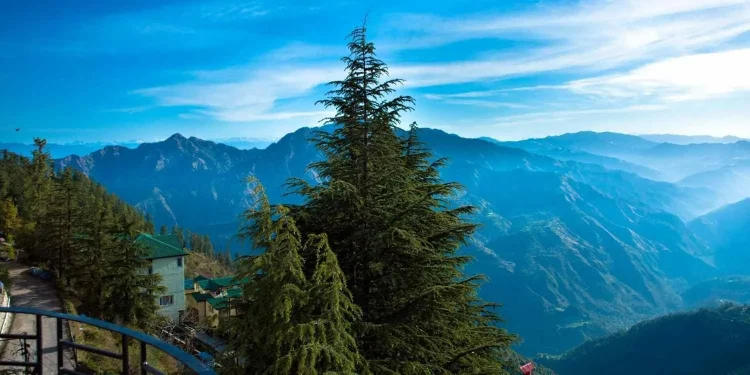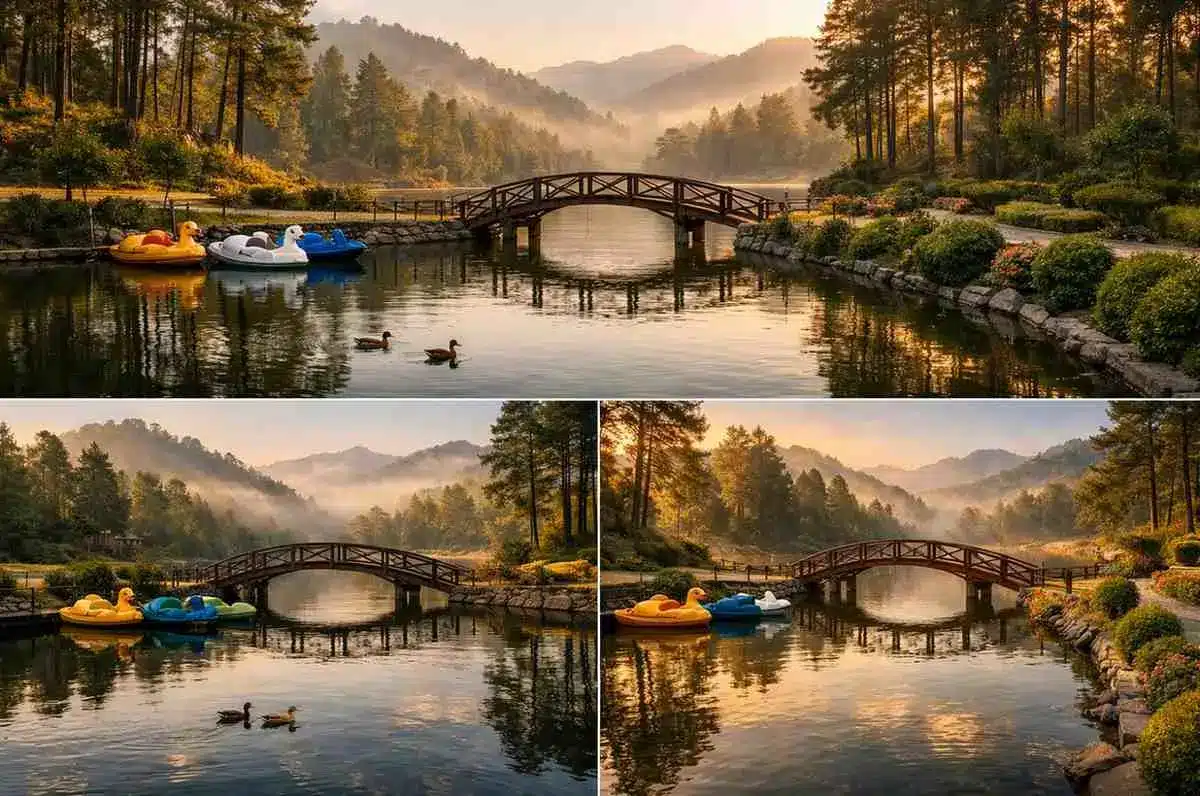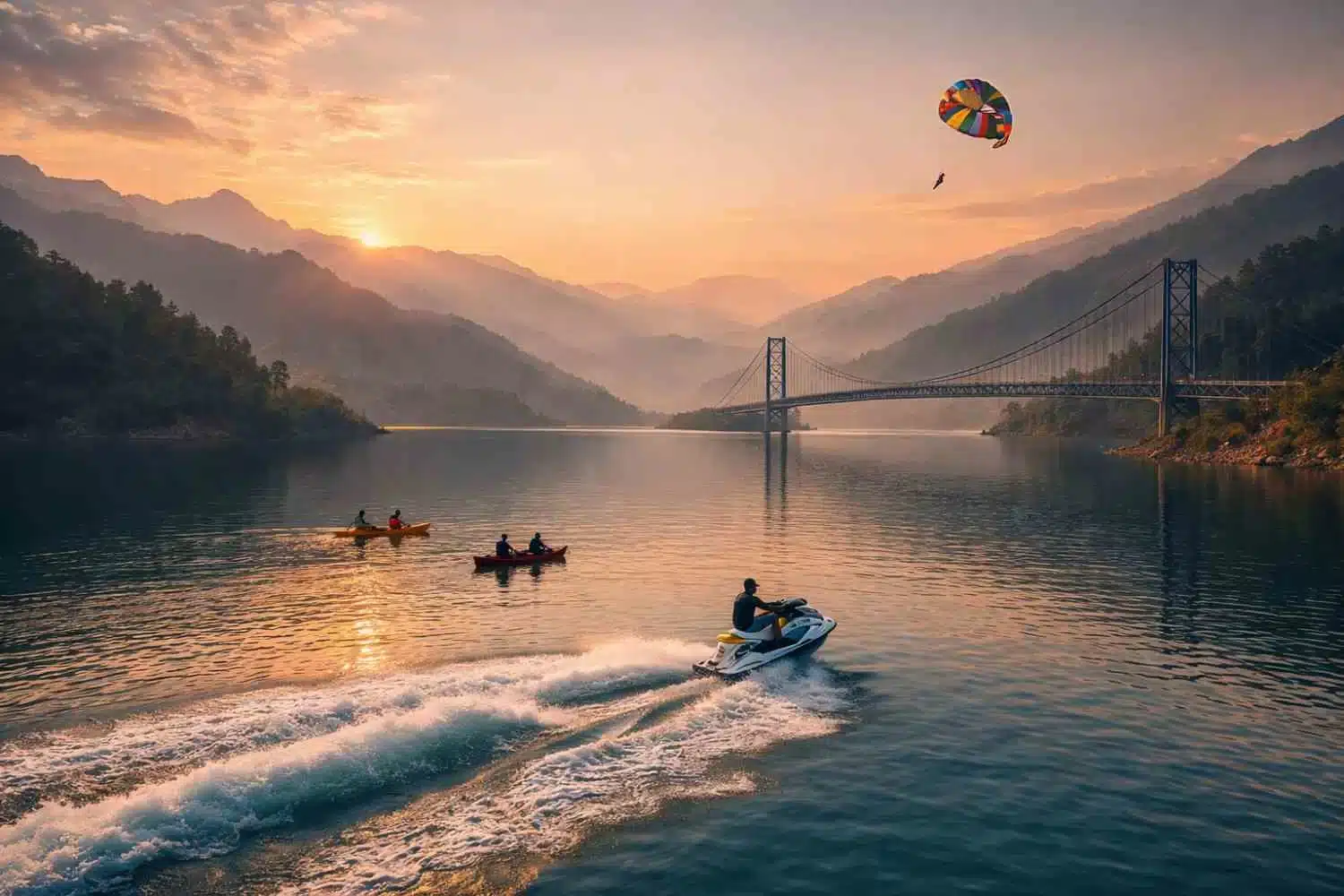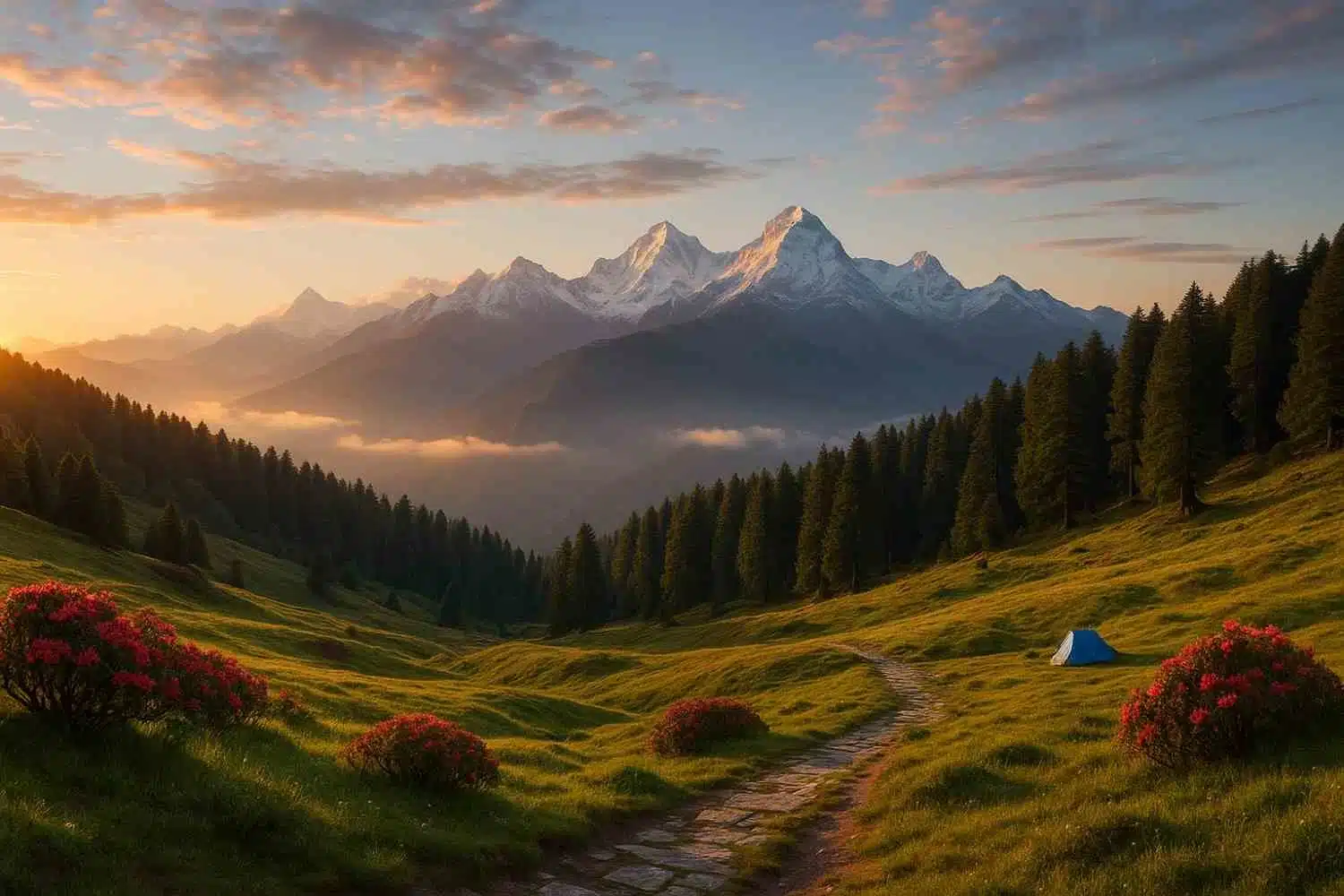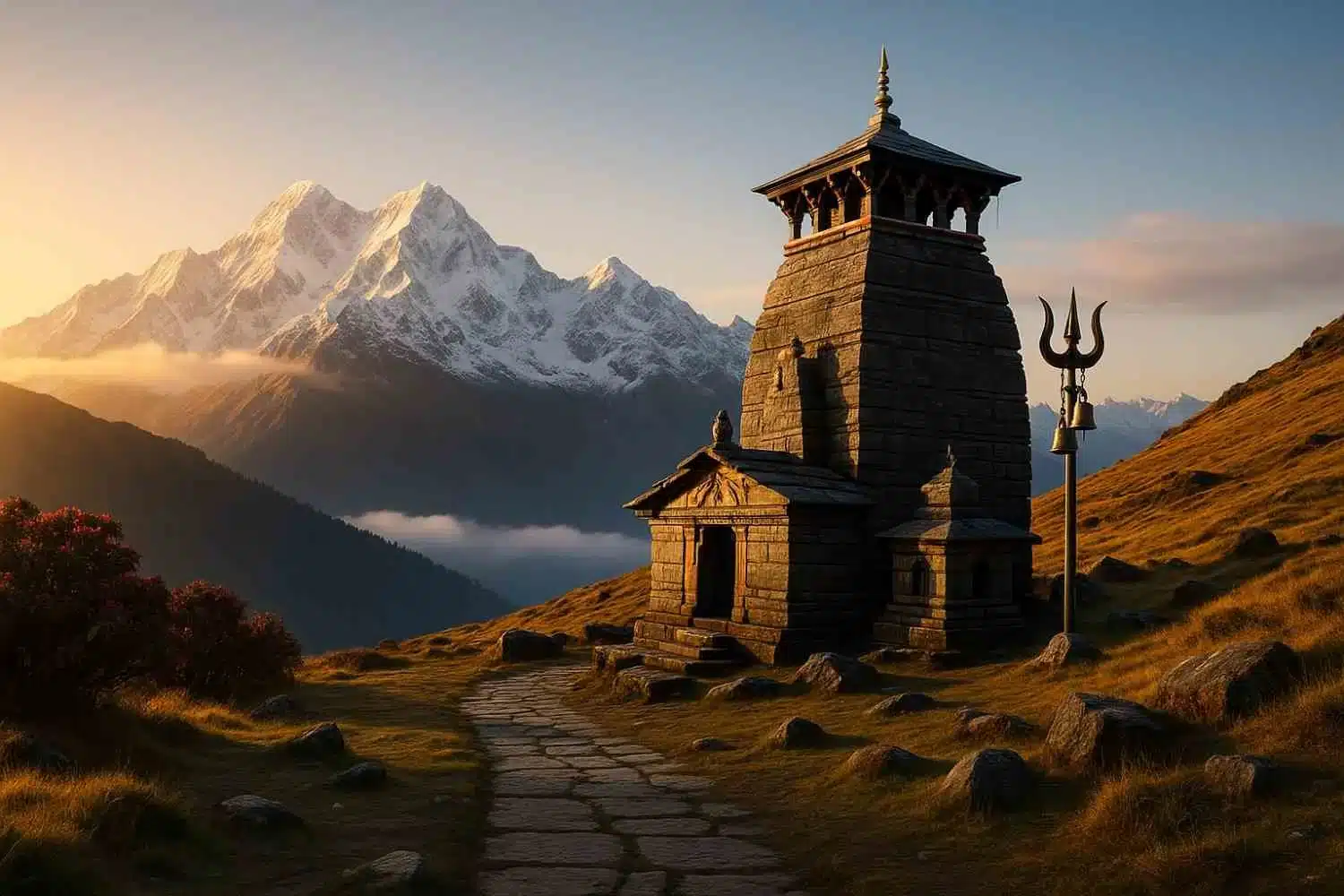If you’ve ever dreamed of a quiet Himalayan escape—pine-scented air, terraced apple orchards, chirping pheasants, and sky-scraping deodars—Mashobra, Himachal Pradesh is exactly the kind of place that lingers in your memory long after the trip is over. Tucked into the Shimla district, Mashobra sits comfortably off the main tourist circuit yet close enough to Shimla to enjoy easy accessibility. Travelers come here for its natural beauty and unhurried pace: forest walks that crunch underfoot, gentle trekking trails that unfurl along ridgelines, and a peaceful environment that invites you to slow down.
This Mashobra travel guide covers everything you need—how to reach, the best time to visit Mashobra, top Mashobra attractions, where to stay (from luxe hideaways to cozy Mashobra homestays), what to eat, and sample itineraries for a day, weekend, or a longer mountain break. Whether you’re planning a honeymoon, a family retreat, or a solo sojourn to recharge, Mashobra is the kind of place that quietly steals your heart.
Mashobra Location & Accessibility
1. Where is Mashobra?
Mashobra is a tranquil town in the Shimla district of Himachal Pradesh. It lies at an elevation of about 2,146 meters (7,041 feet), giving it the pleasant, crisp climate that hill lovers crave. The town’s coordinates are approximately 31.13° N, 77.23° E—a neat pin on the Himalayan foothills, close enough to the region’s main hub yet surrounded by dense forests and apple belt villages. (Wikipedia)
2. How to Reach Mashobra
a. By Road:
Mashobra is connected to Shimla by the historic Hindustan–Tibet Road. The drive is short and scenic; Shimla to Mashobra is roughly 10–13 km, depending on where in Shimla you start, and it typically takes 30–40 minutes in normal traffic. Local buses and taxis ply the route frequently, with taxis being the most convenient for travelers carrying luggage. (Rome2Rio)
b. By Rail:
The nearest major rail link for Mashobra is the Shimla Railway Station, the upper terminus of the famous UNESCO-recognized Kalka–Shimla “toy train.” From Shimla station, you can hire a taxi to Mashobra (about 11 km). The toy train journey itself—though longer in duration—is a nostalgic, scenic ride through tunnels and viaducts. (shimlatourism.co.in)
c. By Air:
Fly into Shimla Airport (Jubbarhatti) and continue by road; the airport is about 30–32 km from Mashobra depending on your final stop within town. Taxis are readily available at the terminal. (MakeMyTrip)
Also Read: Indrahar Pass Trek, Himachal Pradesh
Best Time to Visit Mashobra Himachal Pradesh
Mashobra’s mountain weather changes character beautifully through the year. Here’s a quick season-by-season look to help you decide the best time to visit Mashobra and what to expect from Mashobra weather:
1. Summer (March–June):
Sunny days, cool evenings, and clear views—perfect for forest walks, ridge-top hikes, and picnics among apple blossoms. Daytime temperatures are pleasant for trekking. Expect Mashobra’s orchards to start waking up; this is also a popular time for families and honeymooners.
2. Monsoon (July–September):
The hills turn a lush emerald, the air smells of wet pine, and the waterfalls become more lively. Rain showers can be frequent but typically moderate; carry a rain jacket and non-slip footwear. It’s a very photogenic season if you love moody mountain atmospheres.
3. Autumn & Winter (October–February):
Autumn starts crisp and golden, then winter arrives with frosty mornings and, in some years, snowfall—turning Mashobra’s forests into quiet snow globes. Photographers adore this season. If you’re chasing snow, January and February are your best bet, but do check forecasts and road conditions before you go.
Top Attractions in Mashobra
1. Nature & Scenic Spots
a. Apple Orchards
Mashobra falls squarely in Himachal’s apple country. Through late summer and early autumn, the hillsides glow with fruit-laden trees. Many homestays and estates offer orchard walks—some even let you try your hand at apple picking (with permission, of course). It’s the kind of slow, sensory experience that defines Mashobra.
b. Craignano Nature Park
Just outside Mashobra on the Shimla–Naldehra road, Craignano Nature Park is a delightful green pocket featuring walking paths, picnic lawns, and an old-world entrance pavilion. Historically tied to an Italian estate, the area sits around 7,700 feet and makes for a gentle half-day excursion with family-friendly trails and tranquil corners. (Incredible India)
c. Local Waterfalls & Forest Glades
Monsoon months reveal seasonal cascades along forested nooks. Ask your host about short walks from your accommodation—many properties abut forest fringes that hide little brooks, rhododendron patches, and birdwatching spots.
2. Adventure & Trekking
a. Forest Walks & Ridge Trails
The deodar and oak forests around Mashobra are crisscrossed with walking trails that range from easy ambles to longer day hikes. Paths towards Chharabra and beyond offer sweeping views and that wonderful “pine-needle crunch” underfoot. Always carry water, wear sturdy shoes, and avoid venturing into unfamiliar trails without local guidance.
b. Day Hikes to Nearby Ridges
Treks that loop towards Chhota Shimla, Junga side, or down to valley hamlets are popular for their changing terrains—dense stands of cedar, terraced fields, and occasional glimpses of the Sutlej basin. For camping, look for authorized sites or book locally-run camping experiences that prioritize forest safety.
3. Nearby Attractions (Easy Day Trips)
a. Naldehra & Naldehra Golf Course
About 13 km from Mashobra, Naldehra is a pretty forest hamlet famous for its 18-hole golf course laid out among towering cedars. Even non-golfers love it for the setting, pony rides, and meandering woodland strolls. (Trawell.in)
b. Shimla Mall Road
If you miss a bit of urban buzz, the Mall Road in Shimla—Victorian architecture, cafes, ice cream walks, and Gaiety Theatre—sits just a short drive away. It pairs well with a Mashobra base if you prefer to “dip in and out” of crowds.
c. Kufri
Known for its viewpoints and wintertime snow play, Kufri makes an easy day-trip combo with Mashobra. Trails, yak rides, and views toward snow peaks make it popular with families.
d. Hatu Peak (near Narkanda)
A longer day trip for serious views: Hatu Peak near Narkanda rewards hikers with panoramic Himalayan vistas. The drive from the Mashobra–Shimla side to Narkanda is scenic; the final stretch to Hatu is steep and narrow, so many travelers opt to hike or hire a local cab for the last few kilometers. Allow a full day. (Tripadvisor)
Activities in Mashobra
1) Trekking & Hiking
From soft forest loops to half-day ridge walks, Mashobra’s network of trails is its crown jewel. The terrain is moderate, the air is pine-crisp, and vistas change from orchard slopes to cedar canopies within minutes. Guided walks can be arranged via your resort or homestay—especially useful if you want to combine birding with botany.
2) Camping & Starry Nights
A few operators set up seasonal camps near designated clearings. Expect basic yet atmospheric stays: starry skies, bonfire evenings (subject to forest regulations), and sunrise tea with ridge-top glow. Always choose eco-conscious operators who comply with forest rules, practice leave-no-trace, and avoid plastic.
3) Apple Picking & Orchard Experiences
If you’re traveling in late August to October, orchard visits can be a highlight in Mashobra Himachal Pradesh. Some estates allow supervised apple picking or short farm tours with tastings of apple cider and fresh seasonal produce. Ask in advance—these experiences are often limited to small groups.
4) Nature Photography & Birding
From Himalayan eagles tracing thermals to playful langurs and pheasants rustling through undergrowth, Mashobra’s forests teem with life. Bring a telephoto lens if you’re keen on birds; early mornings are best. (Pro tip: keep your shutter quiet and your distance respectful.)
5) Gentle Adventure
Close-by hubs like Kufri and Naldehra occasionally offer pony rides or seasonal adventure setups—from short zip lines to small amusement zones. For thrill-seekers, paragliding is better known in other Himachal locations (Kullu valley, Bir-Billing), but Mashobra works as a quiet base to explore those regions on longer itineraries.
Accommodation Options in Mashobra
Mashobra’s hospitality scene has blossomed to suit a range of budgets—from storied luxury addresses among cedar forests to eco-stays and Mashobra homestays that bring you closer to local life.
1. Luxury Resorts (Best for indulgence & privacy)
If you’re envisioning a plush hideaway, you’ll find best resorts in Mashobra tucked among orchards and deodars, often with heated pools, destination dining, and curated walks. Expect refined service, spa therapies, and generous mountain views.
2. Upper Mid-range & Boutique Stays
Charming villas and boutique lodges often come with verandas facing the valley, fireplaces, and cozy common areas where you can sip hot chocolate after an evening stroll. These are perfect for couples, small families, or workations.
3. Budget Hotels, Guesthouses & Homestays
For travelers who prioritize location and local interactions, Mashobra homestays are a delight. Many are family-run, with simple rooms, home-cooked meals, and insider tips for lesser-known trails. Look for stays that emphasize responsible waste management and water conservation.
What to consider when booking:
- Proximity to trails (walk-out-the-door access is magical)
- Heating options in winter (room heaters, electric blankets)
- Road access and parking (steep lanes are common)
- Onsite dining or easy access to cafes and dhabas
- Sustainability practices (waste segregation, refillable water)
Mashobra Local Cuisine
Himachali food is soulful—hearty, warming, and rich with local grains and slow-cooked gravies.
- Dham: A festive thali of rice, madra (yogurt-based chickpea or kidney bean curry), khatta (tangy gram flour curry), and assorted dals, often finished with a sweet dish like meetha.
- Siddu: Soft, steamed wheat buns stuffed with savory fillings, often enjoyed with ghee or chutney.
- Babru: A Himachali cousin of kachori—crispy, stuffed, and perfect with tamarind chutney.
- Apple everything: From organic apples to apple cider, jams, and pies—Mashobra’s orchards make sure the dessert and snack sections are well stocked.
- Cafes & homestay kitchens: Many resorts and homestays serve homely Himachali meals; ask for a Dham-style dinner if they can arrange it. Meanwhile, Shimla’s cafes are a short drive away if you want to mix in global comfort foods.
Mashobra Travel Tips
1. What to pack (season-wise):
- Summer: Light layers, a warm evening jacket, sun hat, sunglasses, SPF, and sturdy walking shoes.
- Monsoon: Waterproof jacket/poncho, quick-dry layers, anti-leech socks if you plan deep forest walks, and slip-resistant footwear.
- Winter: Thermal base layers, insulated jacket, gloves, beanie, wool socks, and shoes with good grip (snow spikes if forecasts predict snow).
2. Trekking & Nature Walk Safety:
- Start early, tell your host your route, and carry water and snacks.
- Stick to known trails; take a local guide for longer routes.
- Respect wildlife—observe from a distance and never feed animals.
- Check weather and daylight hours, especially in winter.
3. Local Etiquette & Sustainable Travel:
- Dress modestly around villages and temples; ask before photographing people.
- Carry your trash back; use refillable bottles.
- Conserve water and power at your stay.
- Support local—hire local guides, eat at family-run places, and buy crafts responsibly.
1. Day Trip from Shimla
- Morning: Drive from Shimla to Mashobra (30–40 min). Stop at a viewpoint for valley photos. (Rome2Rio)
- Late Morning: Enjoy a forest walk near your chosen resort or explore Craignano Nature Park for an easy nature-dose and picnic. (Shimla District)
- Afternoon: Orchard visit (seasonal) or a leisurely lunch with local dishes.
- Evening: Drive back to Shimla or stay for sunset tea before returning.
2. Weekend Getaway (2–3 Days)
Day 1: Arrive and unwind—short walk, sunset lookout, and a cozy dinner.
Day 2: Early start for a longer ridge hike; spend late afternoon at Naldehra. If you’re not golfing, enjoy a woodland stroll and tea with a view. Return to Mashobra for a bonfire evening (if permitted). (Trawell.in)
Day 3: Slow morning with apple orchard visit or photography walk; depart after lunch.
Mashobra Suggested Itineraries
3. Extended Stay (4–5 Days)
- Day 1–2: Explore Mashobra’s trails, Craignano, and village lanes. (Incredible India)
- Day 3: Shimla day—Mall Road, Ridge, Gaiety Theatre, Christ Church.
- Day 4: Kufri outing for viewpoints or family-friendly fun.
- Day 5: Long day trip to Hatu Peak near Narkanda for big views; start early and return by evening. (Tripadvisor)
Mashobra Final Travel Notes
- Altitude & acclimatization: At ~2,146 m, most visitors feel fine, but pace yourself on day one and hydrate well. (Wikipedia)
- Connectivity: Mobile data works in town and along main roads; forested pockets may have patchy signals—download offline maps.
- Responsible travel: Mashobra’s charm lies in its quiet. Keep noise low, skip single-use plastic, and respect local customs and forest rules.
- Weather check: If you’re chasing snow or planning long hikes, always check the latest Mashobra weather updates a day before departure.
Quick Facts (at a glance)
- District: Shimla
- Elevation: ~2,146 m (7,041 ft)
- Coordinates: ~31.13° N, 77.23° E
- Shimla → Mashobra: ~10–13 km / 30–40 min
- Nearest Rail: Shimla (toy train terminus)
- Nearest Airport: Shimla (Jubbarhatti), ~30–32 km
(Wikipedia)
Whether you’re here to wander through whispering cedar forests, to savor just-picked apples, or to watch light spill across Himalayan ridges, Mashobra, Himachal Pradesh invites you to slow down and breathe. Save this guide, lace up your walking shoes, and let Mashobra’s quiet magic do the rest.
FAQs
Where is Tashi Jong Monastery located?
In Tashi Jong village, near Palampur, Kangra District, Himachal Pradesh, India.
How far is Tashi Jong Monastery from Palampur and Dharamshala?
About 15 km from Palampur; roughly 60–65 km from Dharamshala (road-dependent).
What is the altitude of Tashi Jong Monastery?
Approximately 1,250–1,350 m above sea level (similar to Palampur’s elevation).
How can I reach Tashi Jong Monastery by road or train?
Road: Via NH-503 through Palampur/Baijnath; local turn-off to Tashi Jong.Train: Nearest major railhead is Pathankot (~120 km), then road transfer.
Is Tashi Jong Monastery open to visitors throughout the year?
Yes, year-round, subject to weather and monastery schedules.
What is the best way to reach Tashi Jong from Palampur?
Taxi is quickest; local buses also ply but are slower with more stops.
Does Tashi Jong Monastery charge any entry fee?
No, entry is generally free.
What are the visiting hours of Tashi Jong Monastery?
Typically 8 AM – 6 PM (confirm on arrival; prayer times may limit access to certain halls).
When was Tashi Jong Monastery established?
In the late 20th century.
Who founded Tashi Jong Monastery?
The Eighth Khamtrul Rinpoche is credited with its founding and guidance.
What is the historical significance of Tashi Jong Monastery?
It’s a key exile-era seat preserving Drukpa Kagyu teachings, arts, and community life.
Which Buddhist lineage or sect does Tashi Jong Monastery belong to?
Drukpa Kagyu (Kagyu tradition of Tibetan Buddhism).
What does the name “Tashi Jong” mean?
In Tibetan, “Tashi” implies auspicious, and “Jong” means fort/valley/seat—often read as “Auspicious Valley/Seat.”
What role does Tashi Jong play in Tibetan Buddhism?
It serves as a teaching, practice, and cultural center for the Drukpa Kagyu lineage.
Is Tashi Jong Monastery associated with Khamtrul Rinpoche?
Yes, it is a principal seat of the Khamtrul Rinpoche lineage
What is the architectural style of Tashi Jong Monastery?
Traditional Tibetan monastery style—tiered roofs, vivid colors, dharma symbols.
What makes the design of Tashi Jong Monastery unique?
Its harmonious setting with the Dhauladhar, intricate murals, and stupas accenting landscaped courtyards.
What can visitors see inside the monastery complex?
Prayer halls, murals, statues, chortens, prayer wheels, and quiet gardens.
Are there monks living at Tashi Jong Monastery?
Yes, it’s an active monastic community.
Does Tashi Jong have a prayer hall or meditation area open to tourists?
The main prayer hall is generally accessible to respectful visitors during open hours.
Are photography and videography allowed inside the monastery?
Outside—usually fine. Inside halls—ask permission; no flash and no disturbance.
What are the main festivals celebrated at Tashi Jong Monastery?
Losar (Tibetan New Year) and select Cham (masked dance) days, among other auspicious dates.
What cultural or religious events are held annually?
Ritual prayer ceremonies, teachings, and masked dances tied to the Tibetan lunar calendar.
What are the top things to do at Tashi Jong Monastery?
Observe prayers, explore the Khampagar complex, shop for crafts, and enjoy mountain vistas
How much time is needed to explore Tashi Jong Monastery?
1–2 hours comfortably; longer if you linger for prayers or photography.
Are guided tours available for visitors?
Formal tours are limited; ask on site—sometimes a monk or staff member may offer brief guidance.
Is there any dress code for entering the monastery?
Modest clothing covering shoulders and knees is recommended.
Are there restaurants or cafes near Tashi Jong Monastery?
Small local eateries/tea stalls may be nearby; broader options in Palampur.
What are the accommodation options near Tashi Jong?
Guesthouses and hotels in Palampur and Baijnath suit various budgets.
Is the monastery suitable for family visits?
Yes—peaceful and educational for families with respectful children.
Are toilets and basic facilities available for tourists?
Basic facilities are typically available; carry essentials and cash.
Which places can I visit near Tashi Jong Monastery?
Andretta, Baijnath Temple, Palampur Tea Gardens, Bir Billing.
How far is Tashi Jong from Andretta Artist Village?
Around 10 km.
Can I visit Baijnath Temple and Tashi Jong on the same day?
Yes—20 km apart, commonly combined.
Are there trekking routes or scenic spots near Tashi Jong?
The Kangra Valley offers gentle village walks, tea-garden strolls, and ridge viewpoints.
Is Tashi Jong close to Palampur Tea Gardens?
Yes—about 12 km.
How far is Bir Billing from Tashi Jong Monastery?
Roughly 35 km by road.
What is the best time to visit Tashi Jong Monastery?
March–June and Sep–Nov for clear views and festivals.
How is the weather in Tashi Jong throughout the year?
Pleasant spring, monsoon rains in July–Aug, clear autumn, chilly winters.
Is winter a good season to visit Tashi Jong?
Yes, if you enjoy quiet and crisp air; carry warm clothing.
When are the major festivals or prayer ceremonies held?
Around Losar and specific lunar dates; check locally for exact schedules.
What meditation or spiritual programs are offered at Tashi Jong?
Primarily monastic programs; short public teachings may occur—ask on arrival.
Can tourists participate in Buddhist prayers or rituals?
You may observe quietly; participation is limited and subject to monastery guidance.
Is there a monastery guesthouse for visitors?
Accommodation is generally external; inquire locally if any limited stays are allowed during events.
Are there any souvenir or handicraft shops inside Tashi Jong?
Yes—small craft shops often sell incense, prayer flags, art prints, and handmade items.
What rules should visitors follow at the monastery?
Silence, modest dress, no shoes in halls, no disruptive photos, and respect prayer times.
What is the daily routine of monks at Tashi Jong Monastery?
Morning/evening prayers, study, ritual practice, community chores, and personal meditation.
Is Tashi Jong Monastery eco-friendly or sustainable?
Practices tend to be low-impact, with traditional materials and careful resource use typical of monastic life.
Why is Tashi Jong Monastery famous among tourists and pilgrims?
For its serenity, authentic Tibetan culture, and Dhauladhar backdrop—a rare, unhurried atmosphere.
What is the distance between Tashi Jong and Kangra Airport?
Approximately 40 km.
How safe is Tashi Jong Monastery for solo travelers?
Generally safe; standard rural travel precautions apply.
What is the nearest bus stop or railway station to Tashi Jong?
Local buses connect via nearby villages/Palampur; major rail is Pathankot.
Can foreigners visit and stay near Tashi Jong Monastery?
Yes—foreigners can visit; stays are best arranged in Palampur/Baijnath.
What makes Tashi Jong Monastery a must-visit place in Himachal Pradesh?
Its living spiritual heritage, Tibetan artistry, and mountain calm—all within easy reach of Palampur.
